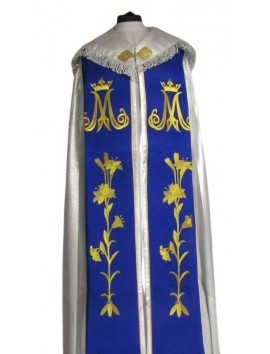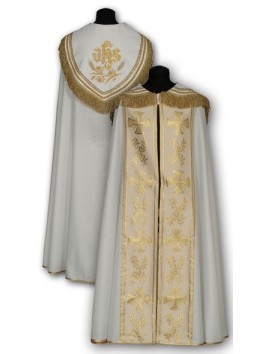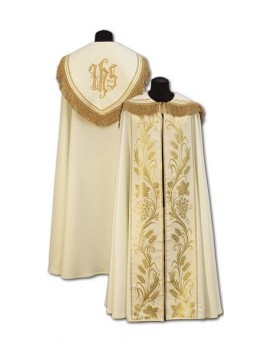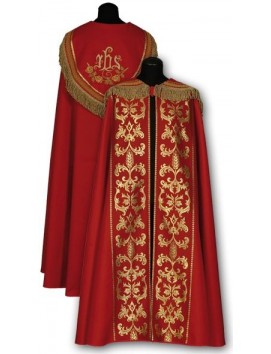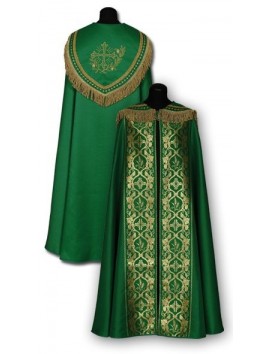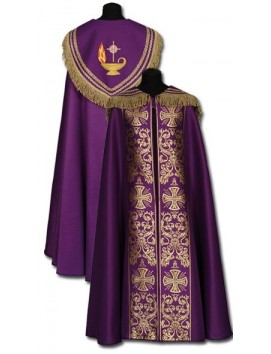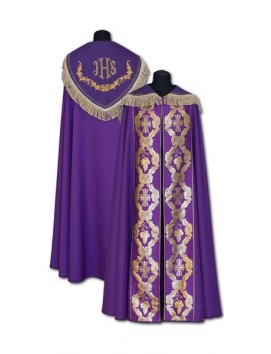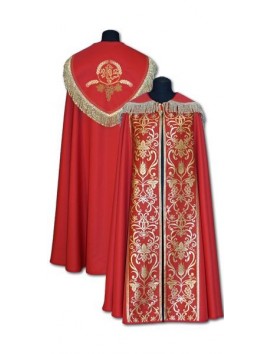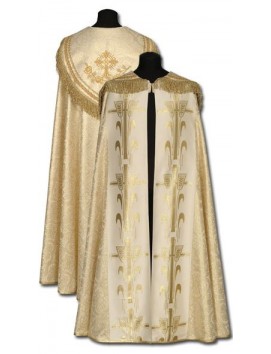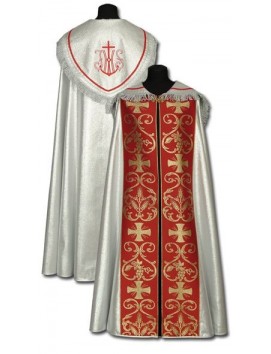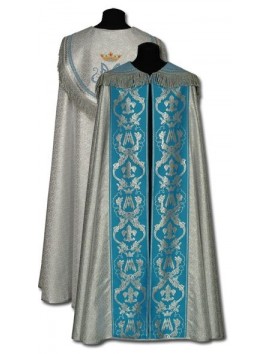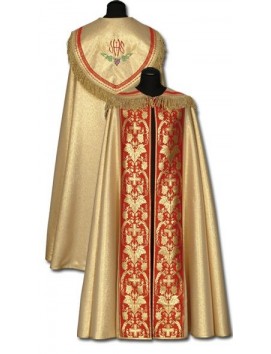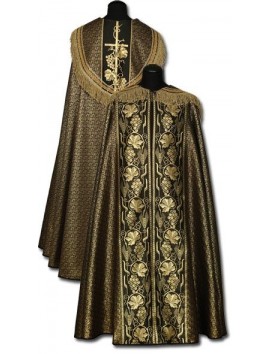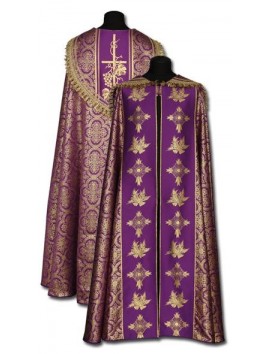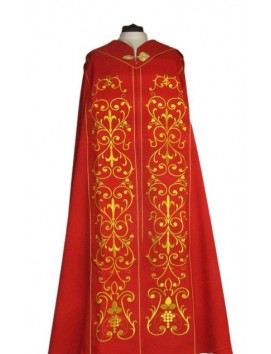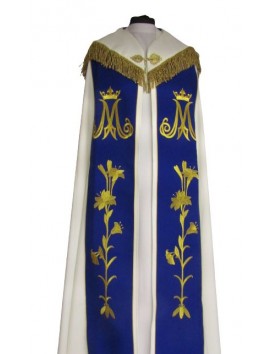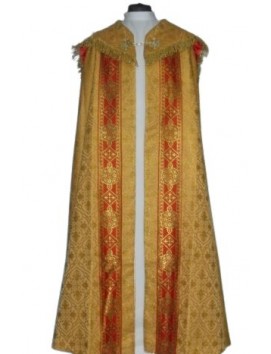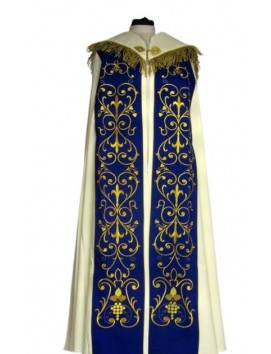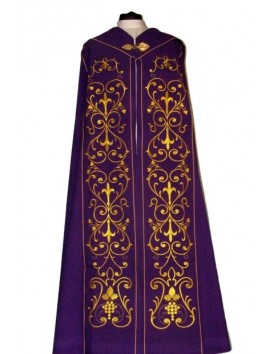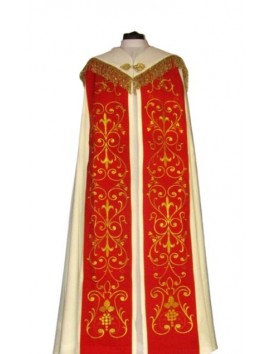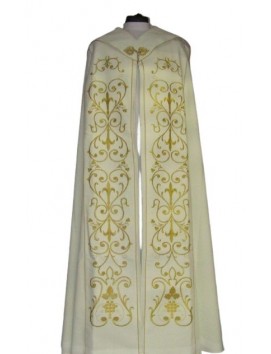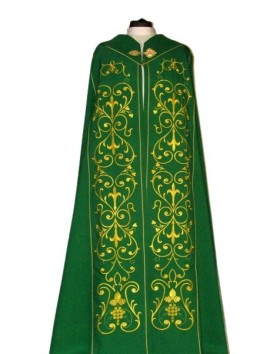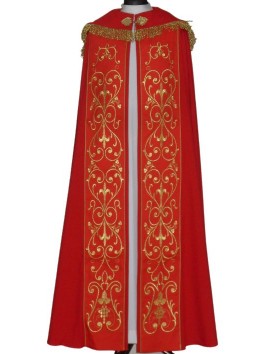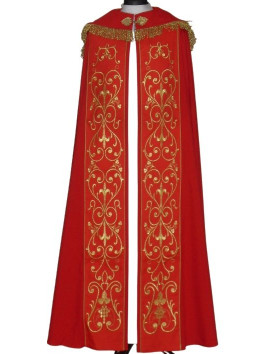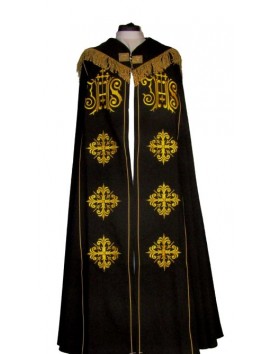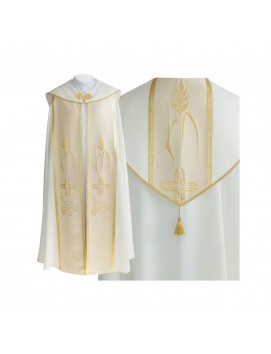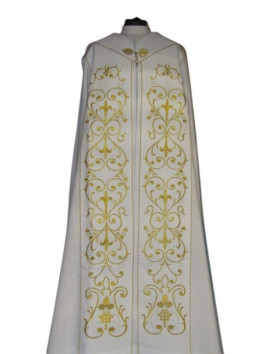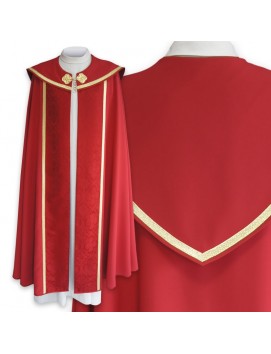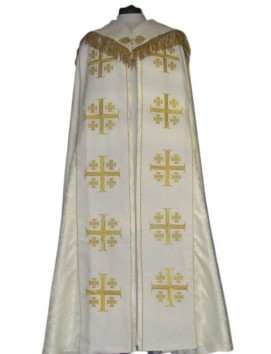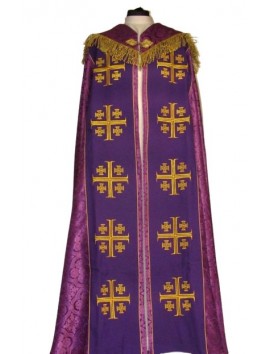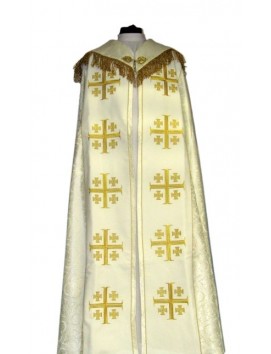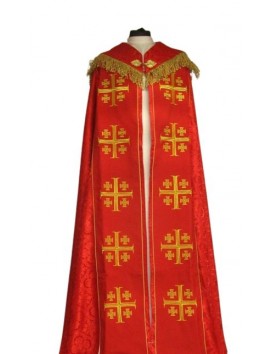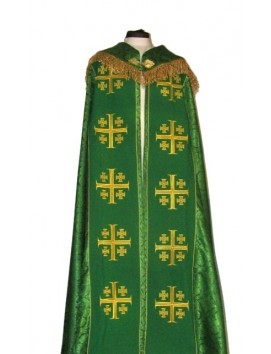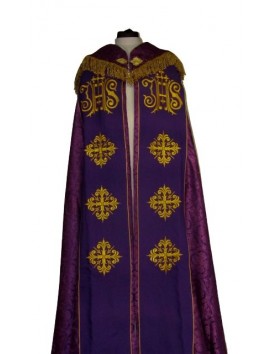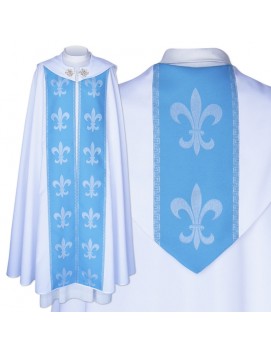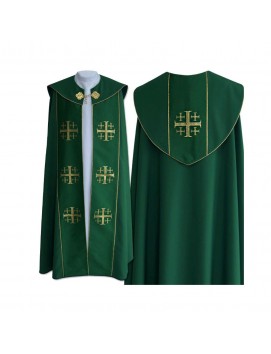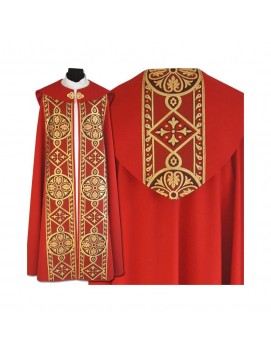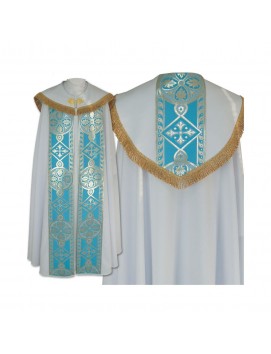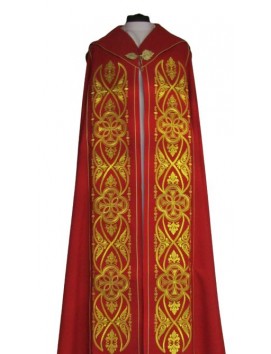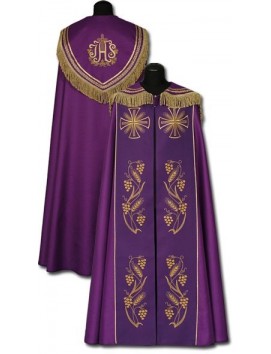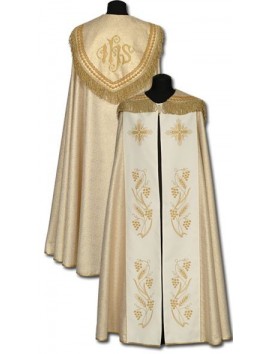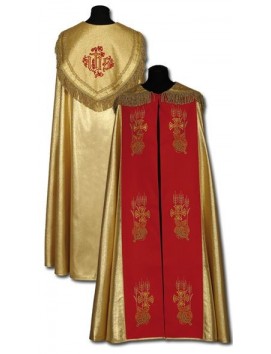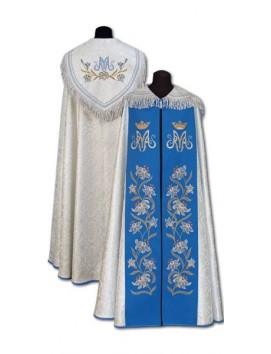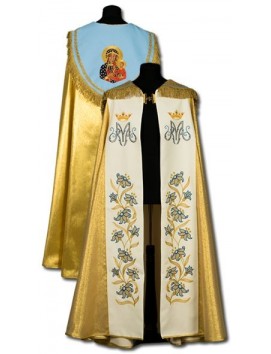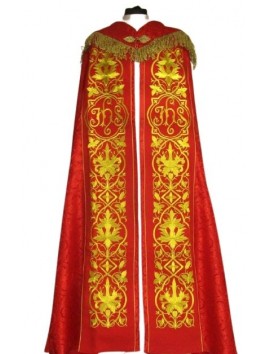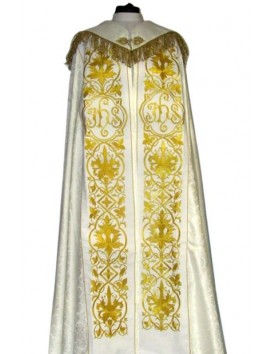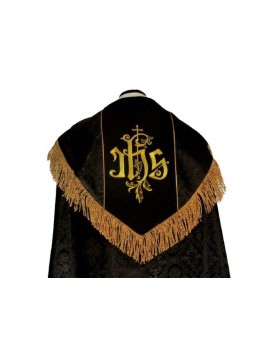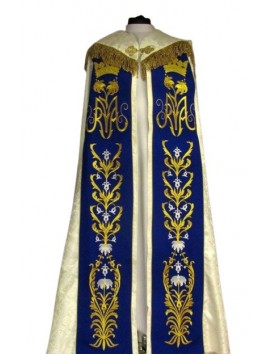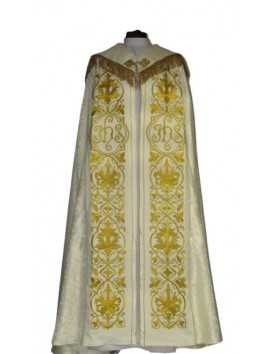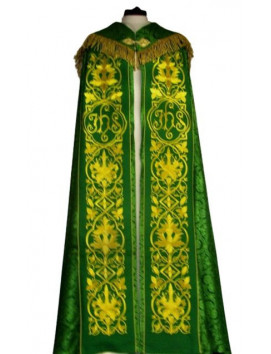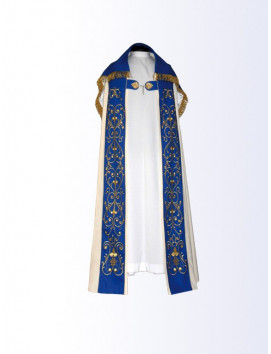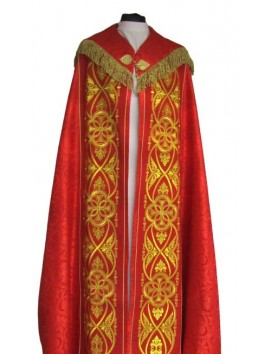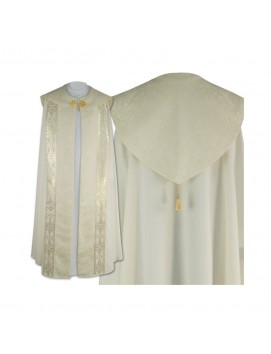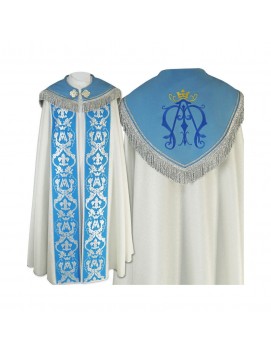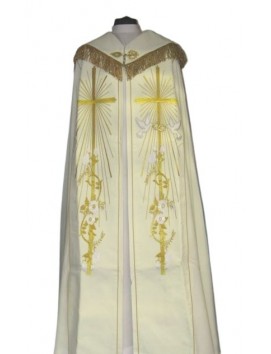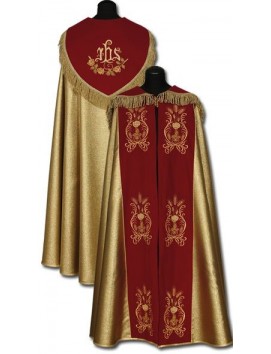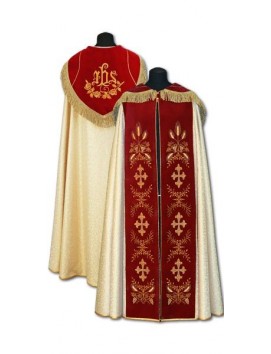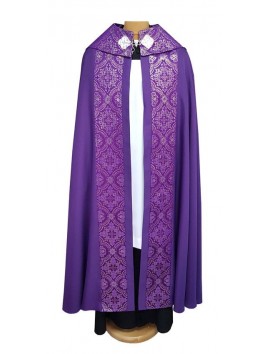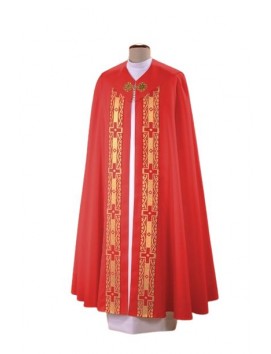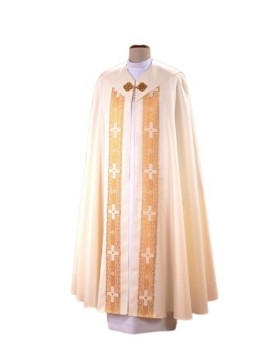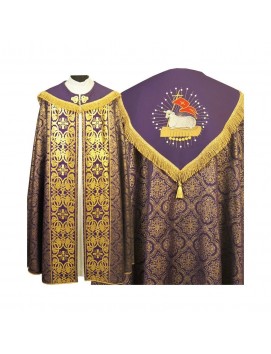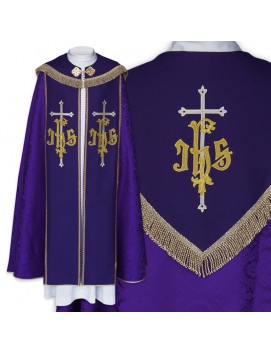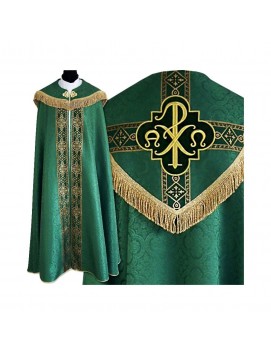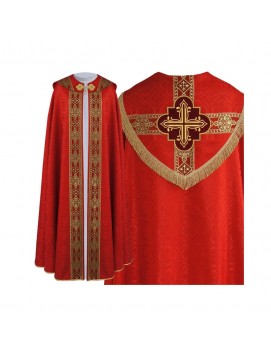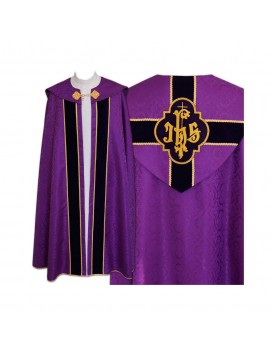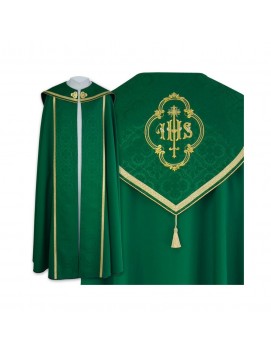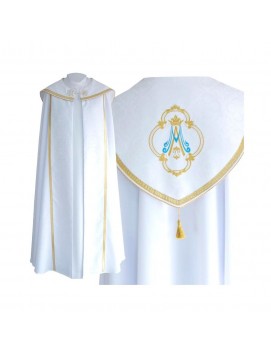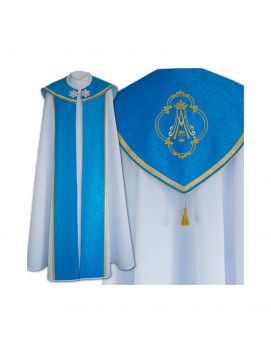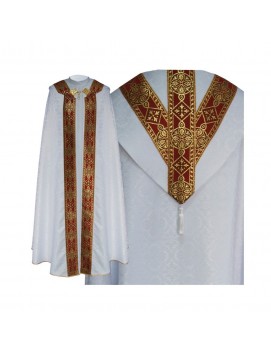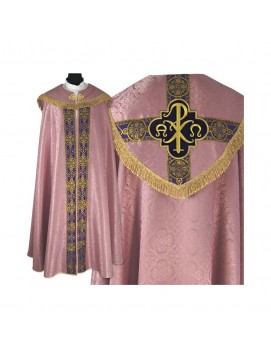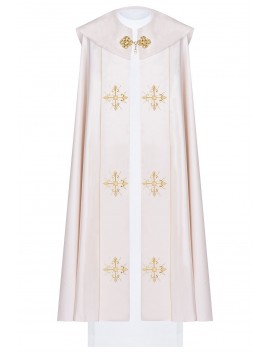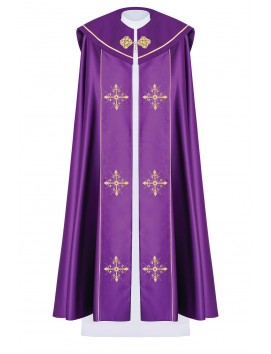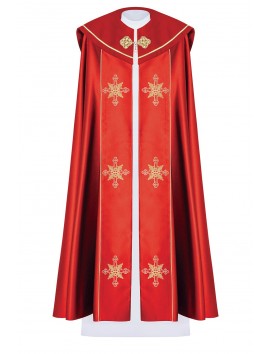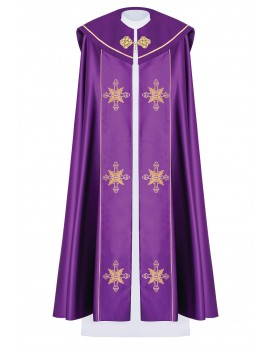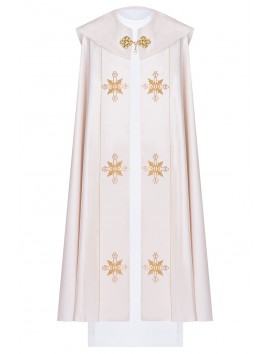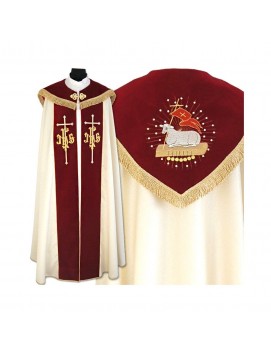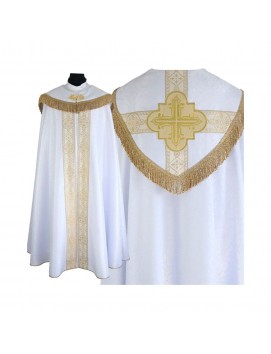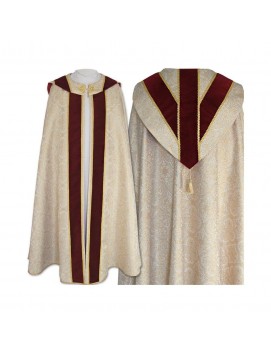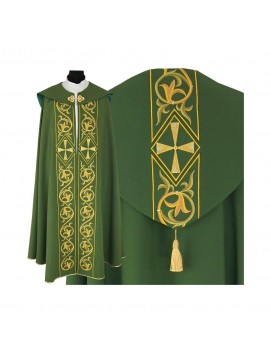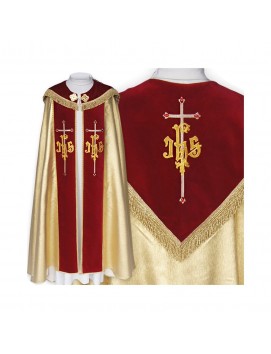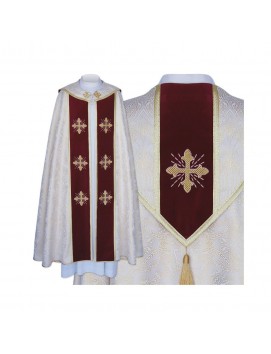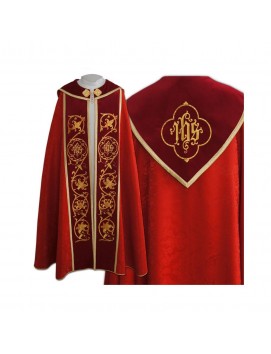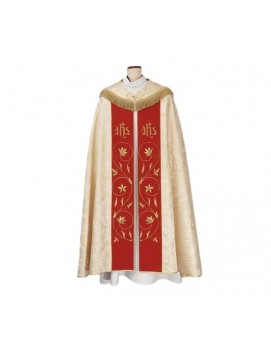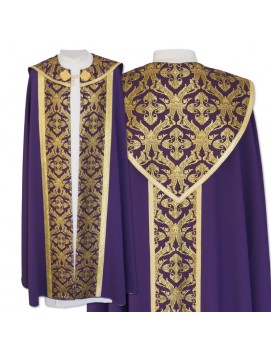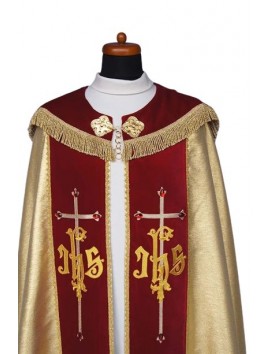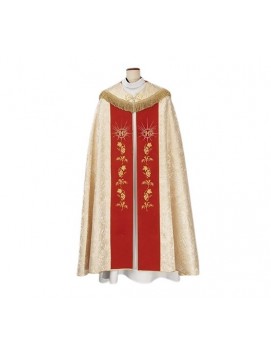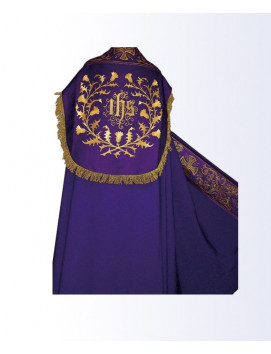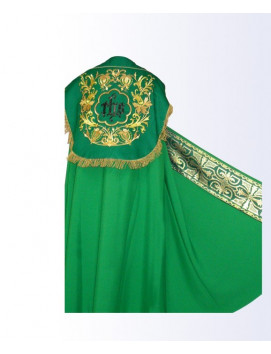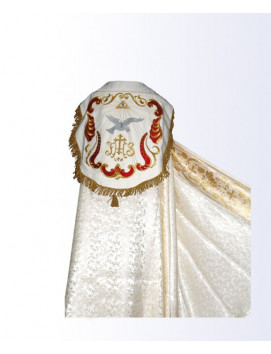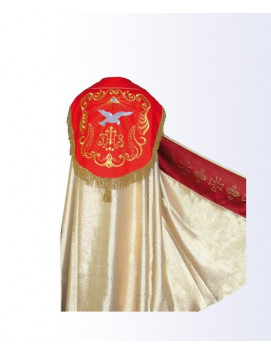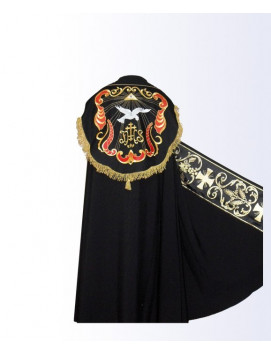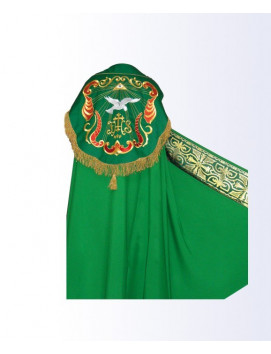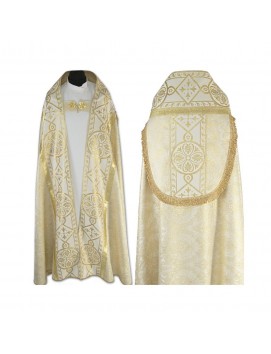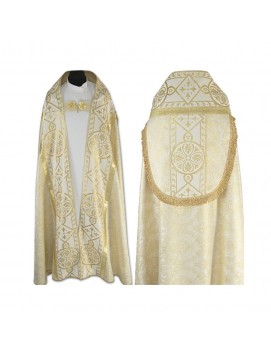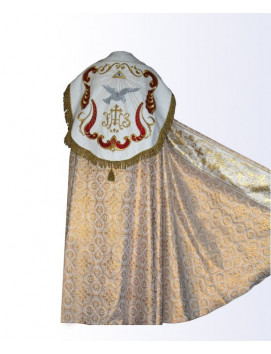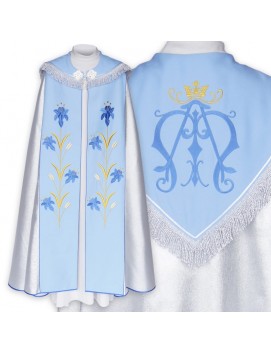No products
Copes
A liturgical cope is a type of vestment worn by clergy members during non-Eucharistic functions in various Christian denominations, including Roman Catholic and some Anglican churches. It is a full-length cloak formed from a semicircular piece of cloth, open at the front, and fastened at the breast with a band or clasp. The cope is made of silk or other rich material in various colors and is often decorated with spiritual motifs, such as the Holy Spirit. Originally, a hood was attached to the neck, but this was replaced by a shield-shaped piece of material. In the 20th century, the hood was restored. The cope was adapted from the cappa choralis, a black, hooded vestment worn by clergy in processions and choir services. The cope is used in various liturgical functions, such as processions, greater blessings and consecrations, the Liturgy of the Hours, Benediction of the Blessed Sacrament, and the celebration of other sacraments outside of Mass. The bishop may use a cope when celebrating outside of Mass the sacraments of baptism, confirmation, matrimony, penance in solemn form, ordination (if not concelebrating), and anointing of the sick. The cope is a symbol of the authority and responsibility of the clergy member who wears it.
A liturgical cope is a type of vestment worn by clergy members during non-Eucharistic functions in various Christian denominations, including Roman Catholic and some Anglican churches. It is a full-length cloak formed from a semicircular piece of cloth, open at the front, and fastened at the breast with a band or clasp. The cope is made of silk or other rich material in various colors and is often decorated with spiritual motifs, such as the Holy Spirit. Originally, a hood was attached to the neck, but this was replaced by a shield-shaped piece of material. In the 20th century, the hood was restored. The cope was adapted from the cappa choralis, a black, hooded vestment worn by clergy in processions and choir services. The cope is used in various liturgical functions, such as processions, greater blessings and consecrations, the Liturgy of the Hours, Benediction of the Blessed Sacrament, and the celebration of other sacraments outside of Mass. The bishop may use a cope when celebrating outside of Mass the sacraments of baptism, confirmation, matrimony, penance in solemn form, ordination (if not concelebrating), and anointing of the sick. The cope is a symbol of the authority and responsibility of the clergy member who wears it.
Understanding the Liturgical Cope
The liturgical cope is a fascinating and symbolic garment that has been part of Christian liturgical attire for centuries. This long mantle or cloak, known in Latin as 'pluviale' or 'cappa', is open in front and fastened at the breast with a band or clasp called a morse. It's a garment that carries the weight of history, tradition, and the solemnity of religious ceremonies.
The Origin and Evolution of the Cope
The cope's origins can be traced back to a practical garment worn by clergy during outdoor processions to protect them from the elements. Over time, it evolved into a more ornate vestment, symbolizing the authority and responsibility of the clergy. The cope has undergone minimal changes over the centuries, with the most notable being the disappearance of the functional hood, which has become a decorative shield of embroidery.
The Significance of the Cope in Liturgical Functions
The liturgical cope is not just a piece of fabric; it's a symbol of the clergy's role as intermediaries between God and the congregation. It's used in various liturgical functions, such as processions, blessings, and the celebration of sacraments outside of Mass. When a bishop wears the cope, it is often accompanied by a mitre, further signifying his high ecclesiastical rank.
Customization and Personalization
Many retailers offer customization options for liturgical copes, allowing clergy to choose fabric, trimmings, and embroidery that reflect their religious tradition. This personalization ensures that the cope not only serves its liturgical purpose but also connects with the congregation on a more intimate level.
The Cope in Art and Culture
In art, angels are often depicted wearing copes, especially in Early Netherlandish painting, highlighting the garment's celestial associations. The cope's design, with its flowing cape-like appearance, evokes a sense of majesty and reverence, enhancing the sacred atmosphere of religious services.
FAQs About the Liturgical Cope
- What is a liturgical cope?
A liturgical cope is a ceremonial cloak worn by clergy during religious services, symbolizing their authority and role in liturgical functions. - When is the cope worn?
It is worn during processions, services of the Divine Office, and for administering sacraments outside of Mass. - Can anyone wear a cope?
While primarily worn by clergy, including bishops and priests, lay ministers may also wear it on certain occasions. - How is the cope fastened?
It is fastened at the breast with a clasp or morse, which is often ornately decorated. - Does the cope's color have significance?
Yes, the color of the cope corresponds to the liturgical season or specific religious celebration.
The Cope's Role in Modern Liturgy
Despite its ancient origins, the liturgical cope remains a vital part of modern liturgy. It continues to be a garment that represents the dignity and authority of the clergy, while also contributing to the beauty and solemnity of religious ceremonies. Whether through traditional designs or modern customizations, the liturgical cope is a testament to the enduring nature of liturgical vestments in the Christian faith.

